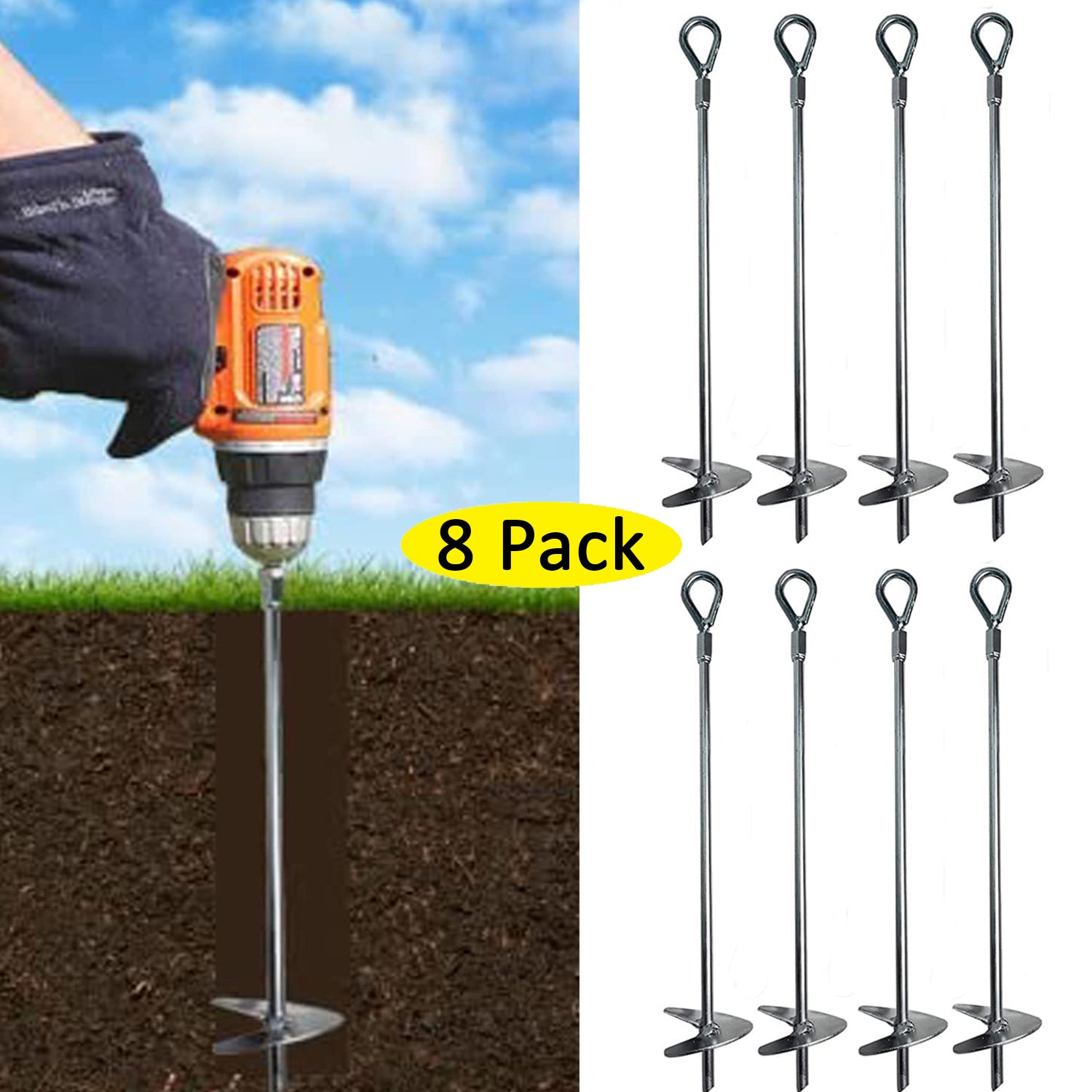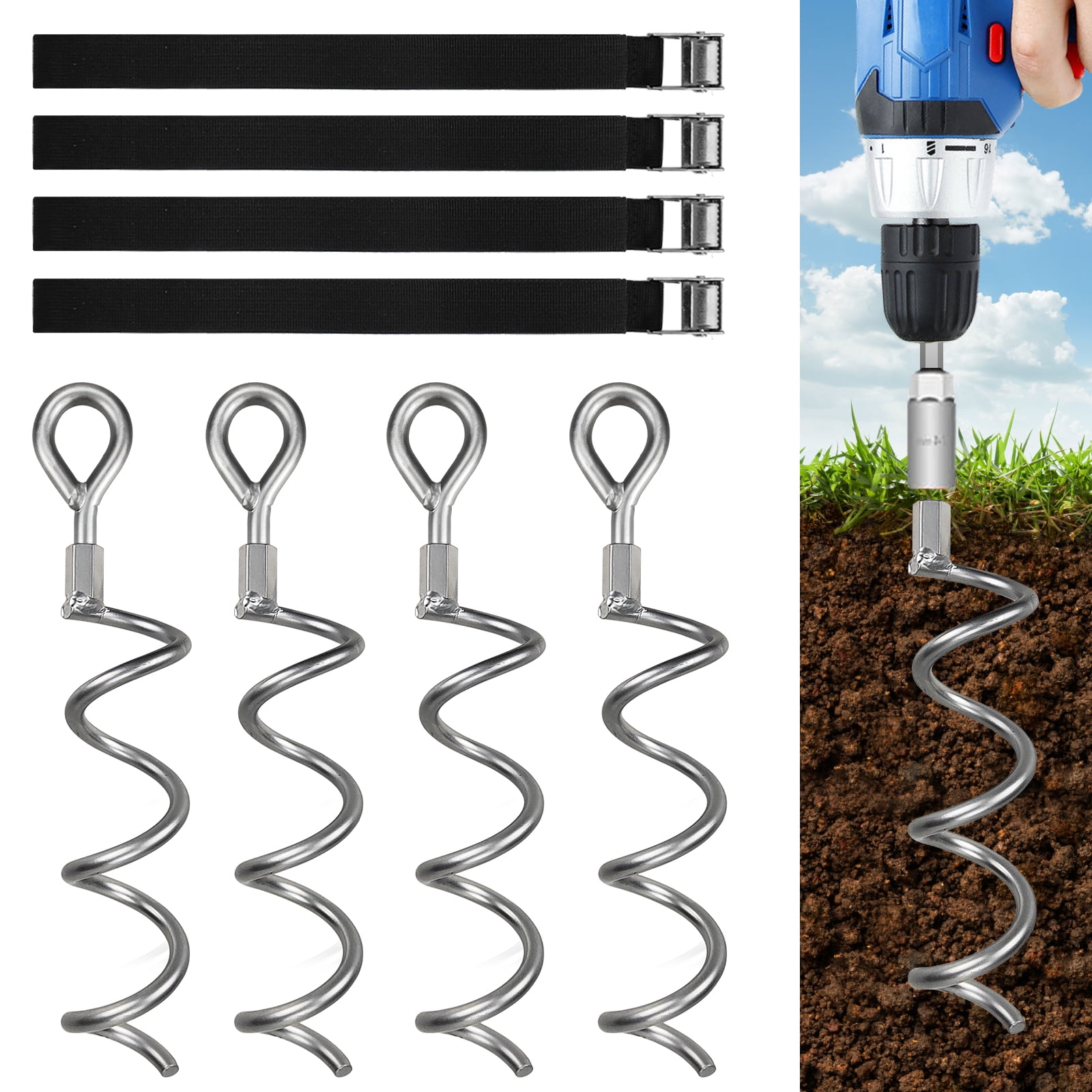Discover the Various Sorts Of Ground Anchor for Your Following Job
When starting a building or landscaping job, comprehending the various sorts of ground supports offered is critical to ensuring both stability and longevity (Ground Anchor). From auger anchors, which master diverse dirt problems, to stake supports created for temporary installments, the choices are various. Additionally, concrete and screw anchors present special advantages in certain situations, while deadman supports are customized for applications calling for resistance to lateral pressures. The option of a suitable anchor type can considerably affect the total success of your job, prompting additional expedition into their corresponding advantages and applications.

Auger Anchors
Auger supports are a popular choice in numerous construction and landscape design projects due to their special style and efficient anchoring abilities. These anchors consist of a helical screw-like shaft that is driven right into the ground, enabling for a steady and safe and secure hold. The spiral style helps with simple setup and makes best use of resistance versus lateral pressures, making auger anchors specifically efficient in applications such as fencing, temporary structures, and disintegration control.
The installation procedure of auger supports is relatively uncomplicated. They can be manually or mechanically mounted, relying on the size and needed depth. This versatility permits for their use in diverse soil problems, from sandy to clayey terrains. Additionally, auger supports can be conveniently gotten rid of and recycled, which includes in their cost-effectiveness and sustainability.
Among the substantial benefits of auger supports is their capability to distribute loads evenly throughout the bordering dirt, lowering the danger of dirt disruption and minimizing ecological influence. Additionally, they are less at risk to loosening up or heaving gradually compared to conventional anchoring methods. As a result, auger anchors are an excellent choice for projects needing trusted and resilient anchoring solutions.

Risk Anchors
When it concerns safeguarding frameworks in a selection of outdoor applications, stake anchors supply a straightforward and dependable option. These anchors are typically constructed from long lasting materials such as steel or light weight aluminum, created to hold up against ecological stress and anxieties while providing ideal security. Their straightforward design enables quick setup, making them an excellent choice for short-term or permanent anchoring requirements.
Stake anchors are particularly beneficial in protecting tents, covers, and various other light-weight structures versus wind and weather. They operate by being driven right into the ground at an angle, developing a strong hold that withstands pull-out forces - Ground Anchor. The effectiveness of risk supports depends upon a number of variables, including soil kind, wetness material, and the angle of setup
For added security, numerous stake anchors come with accessory factors for bands or ropes, allowing for stress adjustments as needed. In applications such as landscape design or building and construction, they can successfully support tools or frameworks on irregular terrain. In general, risk supports give a flexible and economical remedy for protecting various outside setups, making them a preferred option for professionals and DIY fanatics alike.
Concrete Anchors
Concrete anchors give a robust service for securing structures to concrete surfaces, guaranteeing stability and safety and security in various applications. These supports are crucial for jobs varying from property building and constructions to massive commercial installations. They can be found in various types, including growth anchors, glue anchors, and undercut supports, each developed for certain load demands and ecological conditions.
Sticky supports use high-strength epoxy or resin to bond the support to the concrete, offering superior load-bearing capabilities, especially in broken concrete scenarios. Undercut anchors produce a distinct shape within the concrete, offering remarkable holding power, especially in applications where tensile loads are prevalent.
Picking the ideal concrete anchor entails taking into consideration variables such as the weight of the lots, the condition of the concrete, and ecological problems. Proper setup techniques are important to make sure ideal performance and reliability. When implemented correctly, concrete supports substantially boost the architectural integrity of different tasks, making them essential in contemporary building practices. Recognizing the particular needs of your task will certainly assist in selecting the right sort of concrete anchor for the task.
Screw Anchors

Screw anchors are a flexible attaching option that can be efficiently utilized in a selection of applications where standard concrete anchors might not be sufficient. These anchors are composed of a helical style that permits them to be conveniently driven into the ground, making them suitable for use in soil and other substrates. Their one-of-a-kind structure supplies superb holding power and resistance to pull-out pressures, making them ideal for many tasks, from landscaping to structural assistance.
Among the key advantages of screw supports is their convenience of installment. They call for marginal devices and can typically be set up without the demand for excavation, which conserves both time and labor expenses. In addition, screw anchors can be eliminated and recycled, providing a lasting right here service for short-term applications.
Screw anchors are particularly beneficial in locations where dirt problems are challenging, such as loosened or sandy soils. Their capability to be set up at differing midsts enables modification based on particular task demands. On the whole, screw supports provide a dependable and reliable anchoring method, making them an excellent choice for contractors and engineers seeking reliable solutions for their jobs.
Deadman Anchors
Deadman anchors function as a robust solution for stabilizing frameworks in tough conditions, specifically where traditional securing methods may drop brief. These anchors contain huge, hefty items hidden underground, which create resistance against lateral pressures. The design generally entails a straight element, such as a block of concrete or a steel plate, buried in the soil, to which bands or cables are attached.
The efficiency of deadman supports depends on their capacity to disperse loads over a bigger area, reducing the danger of failing in unpredictable soil conditions. They are specifically valuable in applications such as retaining wall surfaces, temporary frameworks, and incline stabilization, where soil movement can endanger the integrity of the structure.
Installation of deadman supports calls for careful preparation to guarantee they are put at the correct deepness and positioning, optimizing their load-bearing capability. While they may need more labor and product than lightweight anchors, their dependability in negative problems makes them invaluable for lasting projects. Deadman anchors are versatile and can be adjusted to various applications, making them a best option for designers facing special obstacles in their projects.
Verdict
In summary, selecting the suitable kind of ground support is vital for making sure stability news and safety in numerous projects. Auger supports master diverse dirt problems, while risk supports suit temporary applications. For concrete surface areas, growth and adhesive anchors give reputable choices, and screw anchors provide flexibility in challenging terrains. Deadman supports are particularly reliable in resisting lateral pressures for maintaining walls. Mindful factor to consider of these alternatives will certainly boost job outcomes and architectural stability.
In addition, concrete and screw anchors existing distinct advantages in details situations, while deadman anchors are customized for applications requiring resistance to side forces - Ground Anchor.Auger anchors are a popular selection in different building and landscape design projects due to their special layout and effective securing capabilities. They come view publisher site in various kinds, including growth supports, glue supports, and undercut supports, each created for certain tons demands and ecological problems
Adhesive anchors use high-strength epoxy or resin to bond the anchor to the concrete, supplying superior load-bearing capabilities, specifically in fractured concrete situations. In general, screw anchors offer a efficient and reputable anchoring approach, making them a superb option for service providers and designers seeking efficient services for their tasks.